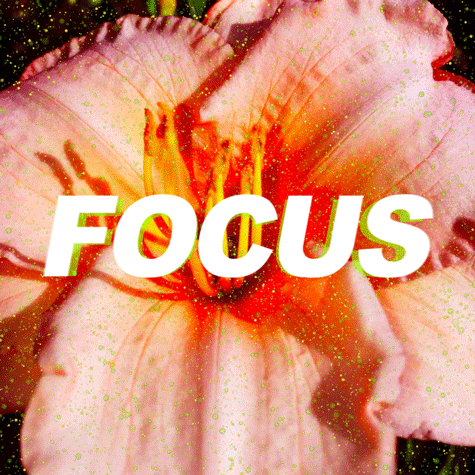How to Be The Smoothest! The Energy of Delicacy.
Introduction:
The energy of DELICACY isn’t timid or dull. DELICACY in its true sense, gives our generations (creations) flexibility and allows us to adapt to our environment; it is a must for our generations to remain in tune.
Let us talk about how to attain the best gradient of DELICACY and robustness at all times, and any situation.
We use the words “generate”, “generator” and “generation” interchangable with the words “create”, “creator” and “creation”.
Eating a robust and heavy pastry is a different experience than eating a fluffy and delicate one, don’t you agree?
Most of our generations require that we use a gradient consisting of both robustness and delicacy. This generates a balanced result. Balance is a key ingredient we must accomplish to achieve the clean definition of “success”. In this piece, I will introduce you to how and when to action the different gradients of delicacy and its polar-opposite, robustness.
Our Distortions
Think Delicacy
is to Be Fragile
In modern traditions, we categorize delicacy as a feminine energy, but the masculine must also know when to be delicate. We often refer to this as “being smooth”. And smoothness (in both the feminine and masculine) makes us more flexible and collaborative. When we are harsh, brash, and stubborn, we become uncollaborative.
A popular assumption in our culture is that we must morph into this manufactured avatar of a so-called “go-getter”. Become a person who walks over anything, takes from anyone, and lets no emotions come in their way. We have convinced ourselves that this is how a successful person “gets the job done”. We falsely think that we must be 100% robust to be seen as strong and successful.
When we add the right amount of delicacy to our equation, we become present and don’t have to bulldoze our way through. We are then in flow. This is when our actions become more functional, aligned, and fun. As a result, we build energy instead of draining energy.
In the process of generation, our equations move from our elevated awareness into our physical form, from our timeless into our timebound. Because of this, we must always consider the aliveness of the sea of energy that we live in. Energy always moves.
The more flexible our equations are, the higher the chance there is that we will actualize what we imagine.
This is where mastering the interplay of delicacy and robustness is real handy. The grading we choose of these two energies affects the life movement of our equations.*
Also, the gradient we choose impacts how well-constructed the generation remains when it interacts with the rest of the world.
(*Note: An equation can be an object, art, music, design, interaction, experience, etc.)
How to Generate
a Balance of
Delicacy and
Robustness in
Your Generations
Let’s use the example of a tree to clarify the clean definition of delicacy.
As you may have observed when watching a tree:
Its trunk is more durable and robust, and its leaves are more delicate. Thanks to this delicacy, the leaves can withstand all kinds of weather changes; they don’t break when wind moves them around. But the leaves also have a grade of robustness about them. This allows them to remain in their form.
You may have noticed that the tree trunk also has a grade of delicacy embedded into it. This flexibility allows the tree to move (sway) back and forth when larger external forces pass through its environment.
These various gradients are necessary for each of these individual equations.
What Affects
the Gradient of
Delicacy and
Robustness in
Our Generations?
When you generate, it is important to perceive the following:
The geometry you wish to achieve
The environment you are making your generation in
The stage your equation is currently at
These three factors influence the percentage of delicacy relative to robustness that you must attribute.
An enormous mountain requires more robustness than a seedling. This is because the mountain is more grown and settled into its form than the little youngster. But…
… the seedling must hold the full potential of the tree — it must know what it is, and where it is going.
The gradient-level of your equation’s should always be flexible and move. You want to keep this in mind whenever you generate energy into physical form.
Want To Acquire
Great Inner and
Outer Connection?
Delicacy is Required
Delicacy is needed for human connection and co-creation:
When our energy is 100% robust and hasn’t embedded any delicacy at all, we have a harder time connecting with others.
A 100% delicate person can’t generate life too well. They can’t maintain their form, and their energy drains out
The feminine energy prefers a partner that understands how to embody masculine solidness and smoothness. And the masculine energy prefers a feminine energy that understands the feminine version of the same.
When we don’t have the right gradient in place, we become uncollaborative and can’t communicate as needed. This is a big problem; our whole reality is based on co-creation with others, and communication is one of the ways that we upkeep all the energy.
Our culture loves moving feminine attributes away from the masculine (and the other way around too). I think the reason for this is that we somehow almost define the feminine and masculine as different species. (Note: doing so is very weird!) We have disconnected the natural collaboration between these energies (and all their versions), so much that we no longer pick up on their actual relationship.
The body refutes this cultural distortion pretty immediately. All humans use the same core-equation to generate the body. We then must tune our personal equation according to our resonance frequency and personal energy.
The Interplay
Between Delicacy
& Robustness
Also Generates
Dynamics in Other
Kinds of Geometry:
Objects
When we generate a piece of furniture, we must achieve this balance, the interplay between delicacy and robustness as well.
A big armchair should preferably be solid and robust, as in not fall apart when anybody of any weight sits on it. It should also be comfortable as well as have organic lines and great material aspects. This is where delicacy and/or smoothness is needed.
A table should be solid and robust, but also have surfaces that are inviting to interact with (have an element of smoothness).
A toothbrush shouldn’t break after a one-time use; however, its bristles must be delicate enough to not injure any gums. It should be robust enough to clean and delicate enough to move in between your teeth and gums.
An Exercise
To Tune Your
Delicacy &
Robustness-
Gradient
This is a two-day observation that I recommend doing to learn the interplay of delicacy and robustness:
Day 1 — Observe the interplay of delicateness/smoothness and robustness/solidness throughout your day.
Can you perceive the various percentages of the gradients throughout?
Day 2 — Observe the differences in delicateness/smoothness and robustness/solidness within yourself. For example:
How does it make you feel?
How does your environment react when you are several grades more robust or several grades more delicate/smooth?
The goal here is to observe the differences with your senses and note which gradient levels you enjoy the most.
This observation teaches us how to tune ourselves into a more balanced state.
A state that is more flexible, generates more resonance and movement, and remains in its construction . . . just like the tree.
“Our culture loves moving feminine attributes away from the masculine (and the other way around too). I think the reason for this is that we somehow almost define the feminine and masculine as different species. (Note: doing so is very weird!)”
-Kissey Asplundwords, main photo & artwork: Kissey Asplund
© Generation Watts — all rights reserved.
Read our terms & conditions
Kissey Asplund is a creative consultant specializing in the process of generation & creative subatomic energy. She is the founder of the creative wellness hub Generation Watts, and has gained international recognition as a music producer, multi-disciplinary artist and DJ. Her journey of researching how to use meditation to enhance creativity began at 17. Today, she teaches others how to connect to their inner superpower and hone their creative-mastery. Learn more about her virtual creative consulting service: The Equation Sessions™


















